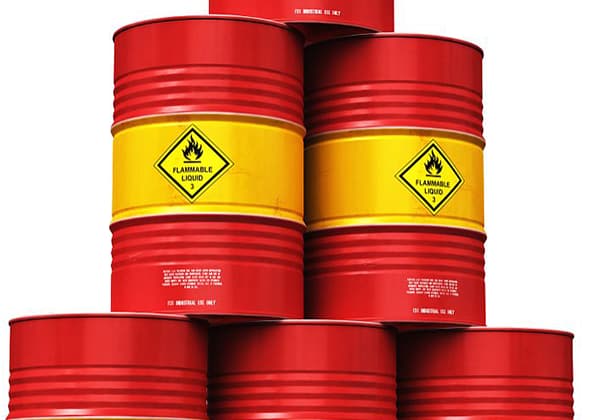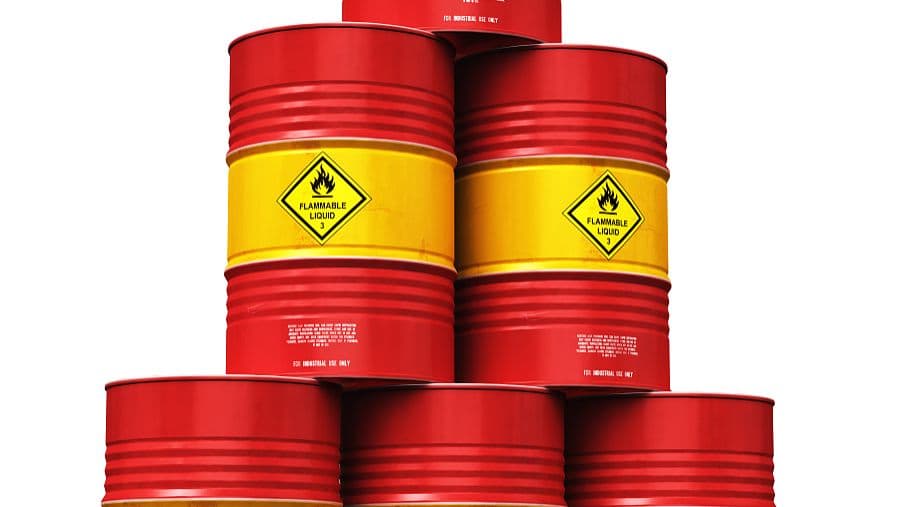
Have you ever considered how much rust costs our economy each year? This article explores the staggering impact of metal corrosion and introduces various types of antirust oils that protect our machinery and infrastructure. Learn how these oils work and discover which type is best suited for different applications.

According to statistics, metal corrosion causes a direct economic loss of 2%~4% of GDP every year.
It is also reported that approximately one-third of the metals smelted worldwide are scrapped due to rust in the industry.
To prevent rusting, people use various methods, and using rust inhibitors to protect metal products is one of the most common methods.
Iron rust appears red, copper rust appears green, and aluminum and zinc rust result in white rust.
From an industrial perspective, preventing the corrosion of iron and steel is crucial.
Antirust oil is a type of oil that has antirust properties, consisting of oil-soluble corrosion inhibitors, base oil, and auxiliary additives.
Antirust oil is widely used for preventing rust in mechanical products, sealing and preventing rust in various metal products, and preventing rust during various processes.

According to different properties and uses, antirust oil can be divided into the following categories:
The displacement type of antirust oil typically uses sulfonate with strong adsorption as the main antirust agent. This can replace the water and sweat on the metal surface to prevent corrosion caused by human sweat.
Additionally, the displacement type antirust oil itself absorbs onto the metal surface and generates a firm protective film to prevent the invasion of foreign corrosion media. Consequently, it is widely used for rust prevention between processes and surface pretreatment before long-term rust prevention.
Moreover, there are several replacement antirust oils that can be used directly for sealing and antirust purposes. According to the domestic standard SH0367-92 for replacement rust preventive oil, such oil products are classified into No. 1, No. 2, No. 3, and No. 4.
These anti-rust oils either contain volatile petroleum solvents or are diluted with solvents for use at room temperature. They include solvent-diluted hard film anti-rust oil, solvent-diluted soft film anti-rust oil, solvent-diluted replaceable anti-rust oil, and others.
Once applied to a metal surface, the solvent in this type of anti-rust oil will naturally evaporate and create a uniform protective film. It is commonly used for rust prevention on the surface of large mechanical equipment and can even be used to seal raw materials and equipment stored outdoors.
One downside is that the workpieces coated with this oil should only come into contact or be packaged together after the solvent has evaporated, or else they will stick together. Therefore, it is only suitable for workpieces with a simple structure and not applicable for those with complicated structures and numerous small holes. It is also not suitable for internal sealing.
The petrochemical industry’s standard for solvent-diluted antirust oil is SH0366-92, while the national standard is GB4879-85B2. The latter is further categorized into four types:
Type 1 – Hard film, which is ideal for long-term indoor and outdoor storage.
Type 2 – Soft film, suitable for long-term indoor storage.
Type 3 – Water displacement soft film, which can replace water and is appropriate for rust prevention of indoor metal products.
Type 4 – Transparent and non-sticky film.
Sealed anti-rust oil has several distinctive features, such as normal temperature coating, absence of solvents, thin oil film, protection against rust between processes and during long-term storage, excellent compatibility with lubricating oil, and no need for cleaning when unsealing.
In general, there are two types of sealed anti-rust oils: soaking and coating.
The products can be fully immersed in a plastic bottle filled with antirust oil for sealing. It is acceptable to add 2% or less of a corrosion inhibitor to the oil, but it is essential to add an antioxidant regularly to prevent the oil from undergoing oxidative deterioration.
These are thin layer oil varieties that can be used directly for coating. However, it’s essential to add more corrosion inhibitors to the oil, and several corrosion inhibitors must be used together.
In some cases, tackifiers like polyisobutylene need to be added to enhance the viscosity of the oil film.
When matched with external packaging, it can be used for long-term indoor storage and provides a good rust prevention effect.
The national standard for sealing antirust oil is GB4879-85 B3.
This is a type of oil that contains a rust inhibitor and emulsifier. When used, it is diluted with water to create an emulsion, which is why it’s known as emulsified antirust oil. It is known for its low cost, safe use, ability to reduce environmental pollution, and energy-saving characteristics.
When applied to a metal surface, it forms a protective oil film after the water evaporates. Currently, it is primarily used for rust prevention between processes and can also be used for long-term storage.
The domestic standard for emulsified antirust oil is GB4879-85 B4.
This is a dual-use oil, possessing lubrication and rust prevention properties.
It is required that the oil can be directly installed and used without the need to remove the sealing oil after unsealing.
Alternatively, the test run oil can be used to seal the product, and it is not necessary to change the oil after the test run. This type of oil is commonly used in systems requiring lubrication or sealing.
Based on usage, the oil can be categorized as internal combustion engine rust proof oil, hydraulic rust proof oil, main shaft oil, gear oil, air compressor oil, instrument and bearing rust proof oil, rust proof test oil, and more.
This is a type of paste that is created by adding antirust additives to the base oil of industrial vaseline or petroleum wax, such as paraffin wax and microcrystalline wax.
The hot coating method is generally used for sealing.
It is characterized by a thick oil film (usually around 0.01-0.2mm, and sometimes even 0.2-1mm), high oil film strength, resistance to loss and volatilization, and a rust prevention period of more than 2 years.
This paste is widely used for the long-term storage of mechanical products and large equipment.
However, a disadvantage of this paste is that the oil seal and unsealing process requires heating, which necessitates good thermal stability and oxidation resistance stability.








